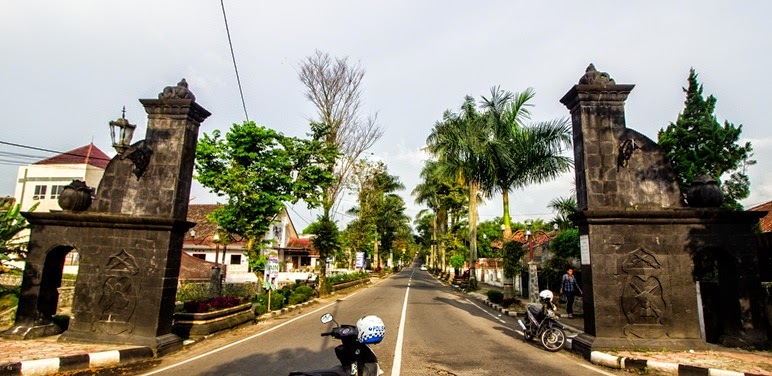DHARMA(धर्म)-BIJAKSANA(बीजांश)-KSATRIA(क्षत्रिय)
Logo of "Indonesian National Police Academy(AKPOL)" Semarang, Central Java, Indonesia
Detailed Study of AKPOL Banner Emblem
A. Pataka ( Banner Emblem ) (पताका , ध्वज )
Shape - Shield Black
Meaning of the Emblem - Protector and Patron Community
B. White Star
Shape - Star 3 pieces
Symbolic of - Tribrata
Color - Golden
C. Birth INP 1 July 1946 is described by following symbols -
C 1. Column of Golden Yellow Color
1 Pole Symbolic of Date 1st
Meaning Soulless and firm
C 2. Red Fire with 7 Flames (Symbolic Trishula) (त्रिशूल)
Symbolic of Month of July
Meaning - Spirit Burning
C 3. Open White Book
Shape - Right 4 pieces and Left 6 pieces
Symbolic of Year 1946 as a means of Education
D. Plinth Golden Yellow Color
Shape - 3 levels
Describe - "Among Foster"
Meaning: Ing ngarso sung tulodo, Ing madyo Mangun Karso, Tut wuri handayani (in Javanees Language)
E. Head Pole golden yellow color
Shape - 3 stacking
System Pangasuhan "Trinity Center" (त्रिशक्ति)
F. Light golden yellow color
Symbolic of Pancasila (पंचशील सिद्धांत)
G. Flowers Wijaya Kusuma white
Form - 5 petals
Symbolic of Pancasila (पंचशील सिद्धांत)
Meaning - Science
H. Base Green Flower
Shape - 3 petals
Symbolic of 3 Qualities of an Officer - Dharma (धर्म )- Wise (बीजांश) - Knight (क्षत्रिय)
I. Fruit Tape
Reads - Police Academy
Reads - Dharma - Bijaksana - Ksatria
DHARMA -
(धर्म ) Being willing to sacrifice in performing Dharma bhakti
(धर्म भक्ति) to the Homeland, the Nation and the State.
BIJAKSANA -
(बीजांश) Clever . Able to make decisions fair wise and selfless.
KSATRIA -
(क्षत्रिय) Having Knight skills and able to carry out tasks quickly and boldly.
J. Foundation Date of AKPOL October 1, 1965 is described by these Symbols
J1. The Rice Green Stalk
Form -1 stalk
Symbolic of - Date 1st
J 2. Yellow Rice
Shape -10 Grain
Symbolic of Month of October
Meaning - Prosperity
J 3. Cotton Green Leaf
Cotton leaf - 6 petals
Symbolic of Count - 6 (Year 65)
J 3. White Cotton Flowers
Cotton Flowers - 5 petal
Symbolic of Count - 5 (Year 65)
Describe - 1965
Meaning - Welfare
Jl. Sultan Agung No. 131 , New Candi , Semarang , Central Java , Indonesia










































